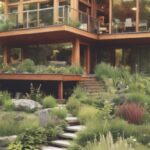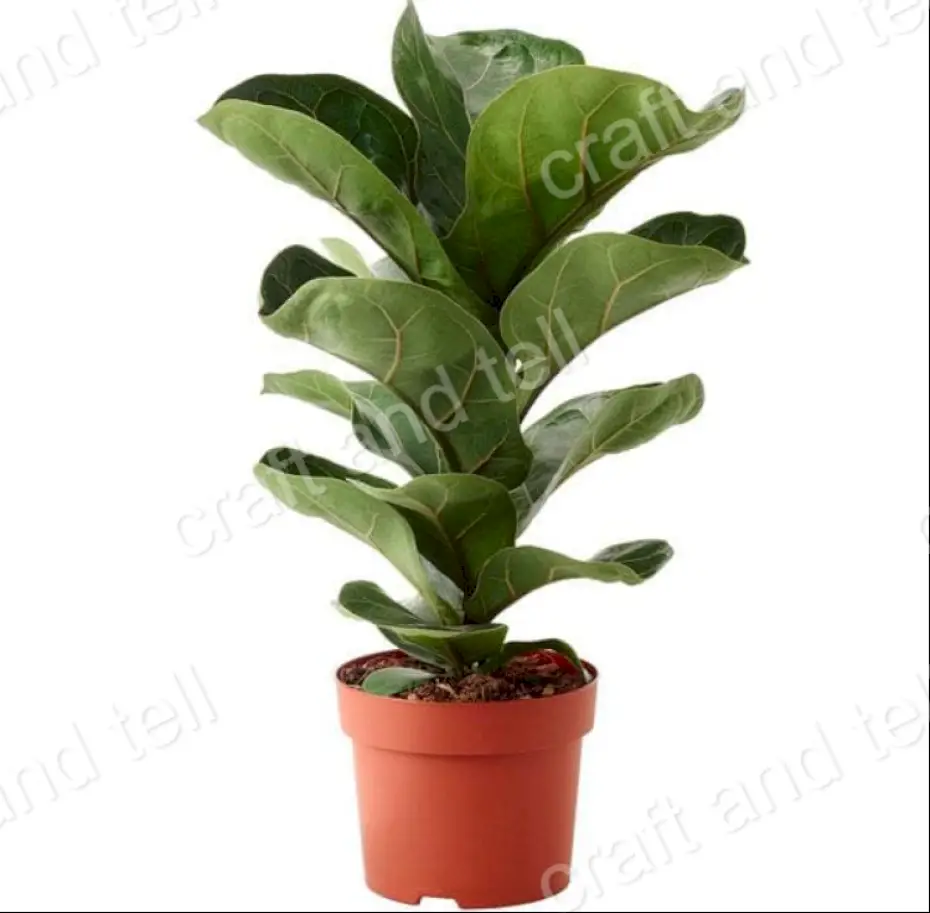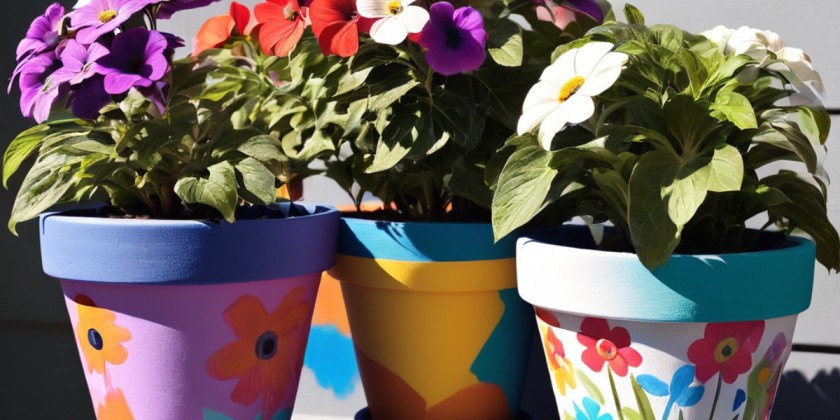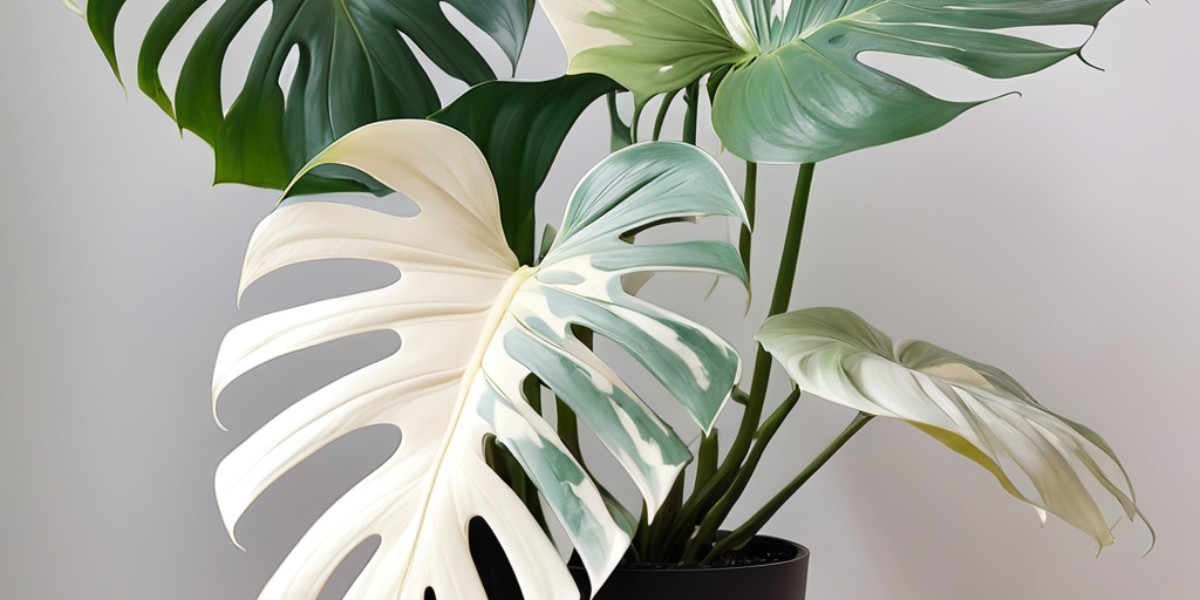Origin and Botanical Information
The fiddle leaf fig, scientifically known as Ficus lyrata, is native to tropical western Africa. In its natural habitat, it can reach impressive heights of up to 50 feet. However, when grown as an indoor plant, it typically reaches a more manageable height of around 10 feet. The fiddle leaf fig gets its name from its distinctive leaves, which resemble the shape of a violin or fiddle.
Popular Varieties
While the main species, Ficus lyrata, is the most commonly grown fiddle leaf fig, there are also several popular cultivars available. These include:
Ficus lyrata ‘Bambino’: A dwarf variety that only grows to a few feet tall.

Ficus lyrata ‘Compacta’: This variety has smaller, more bunched leaves than the main species and can reach up to 5 feet in height.
Also Read:How to Propagate Pothos Plants?

Variegata’ Ficus lyrata: An uncommon variety with showy leaves that feature a mix of green and cream.
Also Read:How to Grow and Care for Majesty Palm?

Now that we have a basic understanding of the fiddle leaf fig, let’s delve into the key aspects of caring for this beautiful plant.
Also Read:10 Types of Palm Plants to Grow Indoors
Understanding Fiddle Leaf Fig Care
To ensure the health and vitality of your fiddle leaf fig, it’s important to provide it with the right growing conditions. Let’s explore each of these factors in detail.
Light Requirements
Fiddle leaf figs thrive in bright, filtered light. While they appreciate plenty of sunlight, direct exposure to intense sunlight, especially during the hot afternoon hours, can cause leaf burn. On the other hand, keeping the plant in low light conditions will stunt its growth. To promote even growth, rotate your fiddle leaf fig every few days so that different parts of the plant receive adequate light.
Soil Selection and Maintenance
Choosing the right soil is crucial for the overall well-being of your fiddle leaf fig. A high-quality, well-draining indoor plant potting mix is ideal. This type of soil ensures that excess water can drain away, preventing root rot. Avoid using heavy garden soil or soil mixes that retain too much moisture, as this can lead to waterlogged roots.
Watering Guidelines
Proper watering is essential for a healthy fiddle leaf fig, but striking the right balance can be a bit challenging. These plants prefer moderate moisture levels in the soil. If the plant does not receive enough water, its leaves will wilt and lose their vibrant green color.
Then again, overwatering can prompt root decay and leaf drop.
During the growing season (spring to fall), water your fiddle leaf fig when the top inch of soil feels dry to the touch. However, be cautious not to let the soil become bone dry, as this can cause stress to the plant. Over the winter months, reduce watering frequency slightly. Additionally, fiddle leaf figs are sensitive to high salt levels in the soil, so it’s important to flush the soil regularly by allowing water to flow through the pot’s drainage holes.
Temperature and Humidity Considerations
Fiddle leaf figs prefer stable temperatures between 60 and 85 degrees Fahrenheit. They are sensitive to extreme temperature fluctuations, so it’s important to avoid placing them near drafty areas or close to heating and air conditioning vents. Maintaining a humidity level between 30 and 65 percent is also crucial for their well-being. If the air in your home is particularly dry, misting the leaves with clean water or placing the plant on a tray of water-filled pebbles can help increase humidity levels.
Fertilizing Techniques
Regular fertilization is key to providing your fiddle leaf fig with the necessary nutrients for healthy growth. During the growing season, which typically spans from spring to fall, use a high-nitrogen plant food specifically formulated for fiddle leaf figs. Adhere to the directions on the name for application rates and recurrence. Over the winter months, you can reduce or suspend fertilization, as the plant’s growth slows down during this period.
Now that we have covered the key aspects of fiddle leaf fig care, let’s move on to pruning, which plays a vital role in maintaining the plant’s health and appearance.
Pruning for Optimal Growth
Regular pruning is essential for keeping your fiddle leaf fig in shape and encouraging bushier growth. Pruning helps remove damaged or dead leaves, promotes air circulation, and prevents the plant from becoming too top-heavy. Here is a step-by-step guide on how to prune your fiddle leaf fig:
Begin by inspecting the plant for any damaged, discolored, or overgrown leaves. These should be the first to go.
Using clean and sharp pruning shears, make clean cuts about an inch away from the trunk or main stem. Avoid tearing or ripping the leaves, as this can cause unnecessary stress to the plant.
If you wish to encourage bushier growth, you can prune the top of the main stem. This will cause the plant to branch out and develop a fuller appearance.
Dispose of the pruned leaves and clean any debris from the plant’s surroundings to prevent the spread of pests or diseases.
By regularly pruning your fiddle leaf fig, you can maintain its shape, prevent leggy growth, and ensure that it remains healthy and visually appealing.
Propagation Techniques
If you wish to expand your collection of fiddle leaf figs or share this lovely plant with friends and family, propagation is an excellent option. Fiddle leaf figs are relatively easy to propagate using stem cuttings. Here’s how you can do it:
Select a healthy stem that is approximately 12 to 18 inches long and has a few leaves. Pinch off all but one or two leaves at the top.Place the stem cutting in a jar or vase of clean, room-temperature water. Ensure that the water covers the nodes where the leaves were Position the cutting in a warm location with bright, indirect light. Avoid exposing it to direct sunlight, as this can cause excessive drying.
Change the water every few days or whenever it appears cloudy, as fresh water promotes healthy root growth.After a few weeks, small white bumps will appear on the stem’s base, indicating the development of roots. Once the roots reach 1 to 2 inches in length, it’s time to plant the cutting in a 1-gallon pot filled with well-draining potting soil.
Water the newly potted cutting until the soil is damp, but not overly saturated. Place it in a location with bright, indirect light and continue to keep the soil moist.Propagation can be a rewarding way to expand your fiddle leaf fig collection, and stem cuttings offer a high success rate compared to other methods.
Potting and Repotting
Choosing the right pot and periodically repotting your fiddle leaf fig are essential for its overall health and growth. Let’s explore these aspects in detail.
Selecting the Right Container
When selecting a container for your fiddle leaf fig, opt for a sturdy pot that is approximately 2 inches larger in diameter than the current one. This will give the roots enough space to grow without being overly constricted. Ensure that the pot has drainage holes at the bottom, as proper drainage is crucial to prevent waterlogged roots.
Repotting Guidelines
Young fiddle leaf figs benefit from annual repotting, preferably in the spring when the plant is actively growing. To repot your fiddle leaf fig:
Gently remove the plant from its current pot, taking care to support the base of the plant.Loosen the root ball slightly to encourage new root growth.Place the plant in the new pot and fill in the gaps with fresh potting mix, ensuring that the soil is evenly distributed.Water the newly repotted plant until the soil is damp, but avoid overwatering.
As the plant matures, it may become too large to repot. In this case, you can remove the top few inches of soil each spring and replace it with fresh potting mix.It’s worth noting that if you plan to repot your fiddle leaf fig outdoors, choose a day when the temperature is at least 50 degrees Fahrenheit. Exposure to colder temperatures can stress the plant and impede its growth.
Identifying and Managing Pests and Diseases
While fiddle leaf figs are generally resilient plants, they can still fall victim to certain pests and diseases. Let’s explore the common issues that may arise and how to address them.
Common Pests
The most common pests that can affect fiddle leaf figs include spider mites and scale insects. These pests can cause damage to the leaves and weaken the plant if left untreated. If you notice small bugs on the leaves or see signs of leaf damage, such as spots or dark patches, it’s important to take action promptly.
To manage pest infestations, you can use appropriate pesticides or natural remedies. Follow the instructions on the product label carefully to ensure effective treatment. Additionally, maintaining good airflow around the plant and avoiding overly damp conditions can help prevent future pest problems.
Fungal and Bacterial Issues
Fiddle leaf figs can be susceptible to fungal and bacterial diseases, which can manifest as leaf spots or discoloration. To mitigate these issues, it’s important to provide adequate air circulation around the plant and avoid overwatering. If you notice signs of fungal or bacterial infections, such as black spots or soft, mushy areas on the leaves or stems, consider using a suitable fungicide or bactericide to treat the problem.
Counteraction is key with regards to overseeing bugs and infections. Regularly inspect your fiddle leaf fig for any signs of trouble, practice good hygiene by cleaning any fallen leaves or debris, and ensure that the plant is not sitting in overly damp conditions.
Troubleshooting Common Problems
Fiddle leaf figs can exhibit various signs of distress, and it’s important to be able to identify and address these issues promptly. How about we investigate a few normal issues and their likely arrangements.
Leaf Discoloration and Spotting
If you notice light brown or bleached spots on the top of the leaves, it may indicate that your fiddle leaf fig is receiving too much direct sunlight. This condition, known as leaf sunburn or leaf scorch, can cause damage to the leaves. To remedy this issue, prune away the affected leaves and relocate the plant to a spot where it receives bright, indirect light rather than intense direct sunlight.
Dark brown spots or browning edges on the leaves can be a sign of root rot caused by overwatering. Check the roots for signs of rot, such as brown and mushy texture. If root rot is present, trim away the affected leaves and carefully remove any damaged roots. Repot the plant in fresh, well-draining soil and adjust your watering routine to prevent overwatering.
Yellowing of newer leaves can indicate a bacterial problem. Unfortunately, once a bacterial infection takes hold, it may be difficult to save the plant. However, you can try cutting off the affected leaves and repotting the plant in fresh soil to give it a fighting chance.
Leaf Dropping
Leaf drop in fiddle leaf figs can be caused by both overwatering and underwatering. If the soil is consistently soggy or the plant is exposed to extreme temperature changes, it can lead to leaf drop. To remedy this issue, adjust your watering routine to ensure the soil is slightly moist but not overly saturated. Additionally, move the plant away from heating or air conditioning vents to prevent sudden temperature fluctuations.
By addressing these common problems promptly, you can help your fiddle leaf fig regain its health and vitality.
Frequently Asked Questions
To wrap up our comprehensive guide, let’s address some frequently asked questions about fiddle leaf figs.
Are fiddle leaf figs easy to care for?
Fiddle leaf figs can be a bit finicky at times, but with the right conditions and care, they can thrive. They require warmth, humidity, plenty of bright, indirect light, some direct light, and regular watering. While they appreciate moisture, it’s important to avoid overwatering, as this can lead to root rot.
How fast does the fiddle leaf fig grow?
Under optimal conditions, a fiddle leaf fig can grow about 2 feet per year, ultimately reaching a height of 6 to 10 feet.
Will a fiddle leaf fig produce fruit?
Indoor fiddle leaf figs are unlikely to produce fruit. Fruit production is more common in outdoor specimens.
Now that you have a comprehensive understanding of fiddle leaf fig care, you can confidently cultivate and nurture this beautiful plant.
Conclusion
The fiddle leaf fig is undoubtedly a stunning addition to any indoor space. With its large, glossy leaves and elegant form, it adds a touch of sophistication and natural beauty. By providing the right growing conditions, understanding the plant’s specific needs, and addressing any problems promptly, you can cultivate a healthy and thriving fiddle leaf fig. Remember to pay attention to light requirements, soil selection, watering guidelines, temperature and humidity considerations, regular pruning, propagation techniques, and reporting procedures. With proper care and attention, your fiddle leaf fig will reward you with its beauty and grace for years to come.
Now it’s time to put your newfound knowledge into practice and embark on your journey of fiddle leaf fig cultivation. Enjoy the process and watch as this magnificent plant flourishes in your home. Happy gardening!











